The second of the three orchid species in our area that has winter leaves is Tipularia discolor or Crane-fly orchid. Its common name comes from the shape of the flowers: they appear to mimic the crane fly. Oddly enough, each one of these misshapen flowers is twisted slightly on the flower stem, creating an odd assemblage. It is believed that the flowers are twisted to the right or to the left so that the pollinator, a noctuid moth, will be positioned to contact the pollinarium on one of its eyes.
Due to the color of the flowers and absence of leaves at bloom time, these orchids are quite difficult to spot against the leaf litter on the forest floor. This “camouflage” color also makes the species difficult to photograph. However, in late fall, and throughout the winter, the solitary leaves are fairly easy to find. Some areas of the forest are dotted here and there with single leaves and, sometimes, groups of a dozen or more leaves.
These leaves come in a variety of color forms:

As you can see, the leaf shown on the left is quite dark, and it has some wart-like spots which is common among the Tipularia discolor leaves in our area. In my experience, the color of the leaf makes no difference in the color of the flowers. The leaf shown on the right is the most common color form that I usually find.
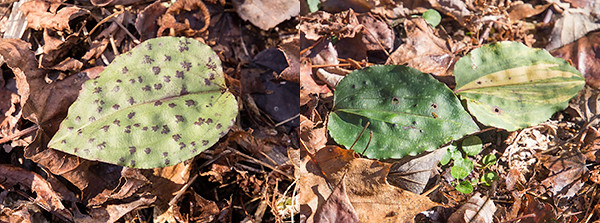
Another common color form is the leaf shown on the left. It is a medium green color and has the typical, purple, wart-like spots. The color form shown on the far right is quite an oddity. I’ve seen it only this one time, and due to its pale color, I suspect that it may not survive to create a flower stalk.
All of these color forms can be found mixed in the population of this orchid species. There seems to be no rhyme or reason for this strange happenstance.
*** Updated on March 8, 2013. While walking through a local downtown park, I saw several large groups of leaves (plants) of this orchid. I had seen single leaves scatered here and there in the park in previous years, but I had not seen such large groups. Each of these 2-inch (5 cm) leaves is a single plant, which is capable of sending up a bloom spike of sixty or more flowers:
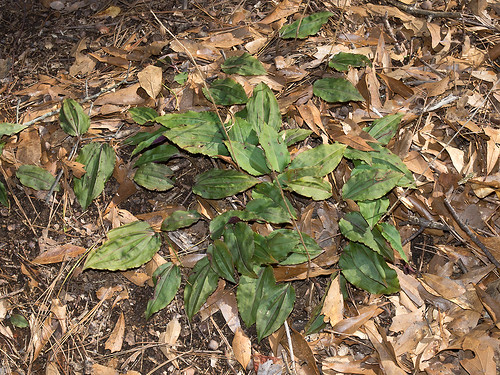
The group below shows another large group of 2-inch (5 cm) leaves with that strange, “warty” appearance:
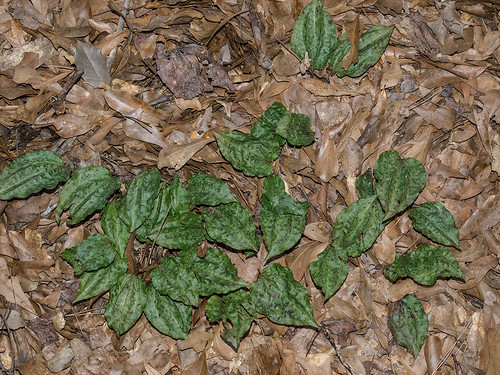
One feature of this orchid’s leaves is the color on the underside of the leaf. It is always a magenta/purple color — a key to identifying the leaf in the field:
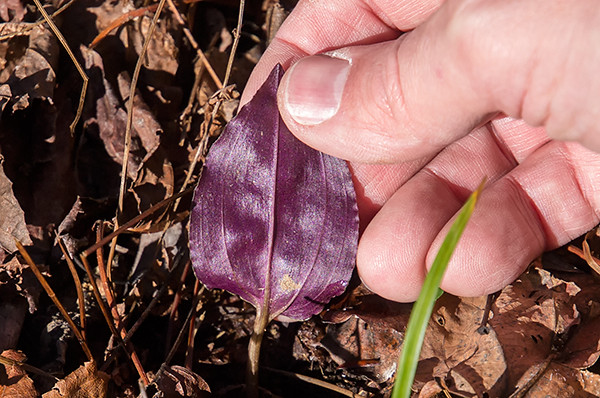
In our area of northwest South Carolina, you can find this orchid in bloom from the last week of July to the first week of August:
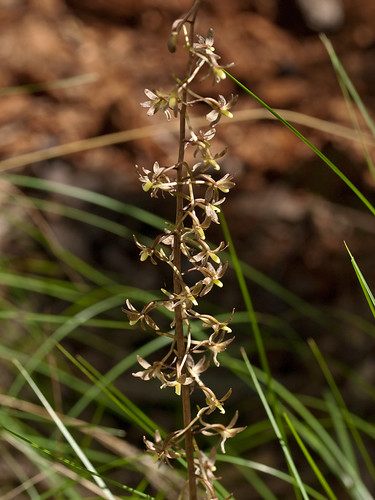
The flower stem will be anywhere from 12-24 inches (30-60 cm) tall. Very rarely (I’ve seen it only one time), the flowers will lack the typical brownish purple color, and will appear to be a solid green color. I do not know if the color of the leaf gives a clue to locating a green-flowering plant, since the leaf will have withered by the time the flowers arrive:
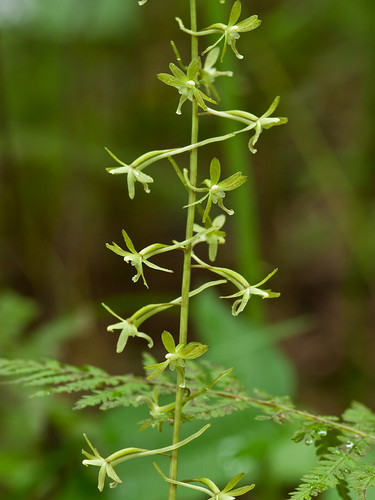
By the end of August, any pollinated flowers will have formed plump seed capsules:

By mid-winter, these seed capsules will have split, releasing their seeds and will look like this:
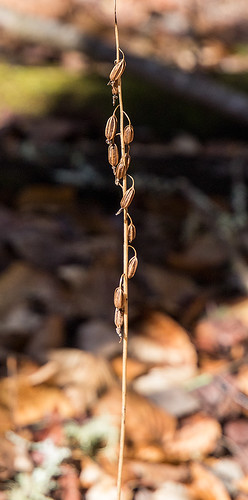
This orchid species is frequently found in our area of the Southeast. Its overall distribution is from the panhandle of Florida west to extreme eastern Texas, and north to Pennsylvania and New Jersey, with scattered pockets of plants in New York state.
As with most orchid species, some years bring large number of flowering plants, where other years bring just a few. Regardless, this is another species that I look forward to photographing every year…
— Jim

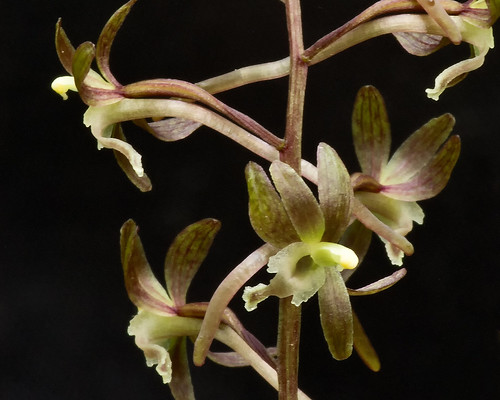
8 Responses
Nice work, Jim. I’m sure your botanical-minded friends will appreciate the value and beauty of this site. And we flower-dummies will enjoy checking in occasionally as well.
PS: You should write a book!
Thanks, Brother! I appreciate your thoughtful comment. And, I see that your math is up to snuff… 😉
Jim, I only discovered this today. It is marvelous. Beautiful photo and wonderful information.
Stay tuned, Sonnia. I’ll be heading out in one week (hopefully) to shoot Neottia (Listera) australis and Corallohiza wisteriana.
What is the third winter leaf orchid? I only know of Cranefly and puttyroot.
thanks, love your site
The third orchid species with a winter leaf is Goodyera pubescens. In fact, the leaves of that species are evergreen.
Thank you very much for your comments on the color forms. I am stationed in southeastern Virginia and we have another color form – purple on both sides of the leaf. They ate uncommon but often mixed in the other two forms. I have not a streaked/variegated form like you posted. Have you seen it again ? I was wondering how common it might be.
Thxs